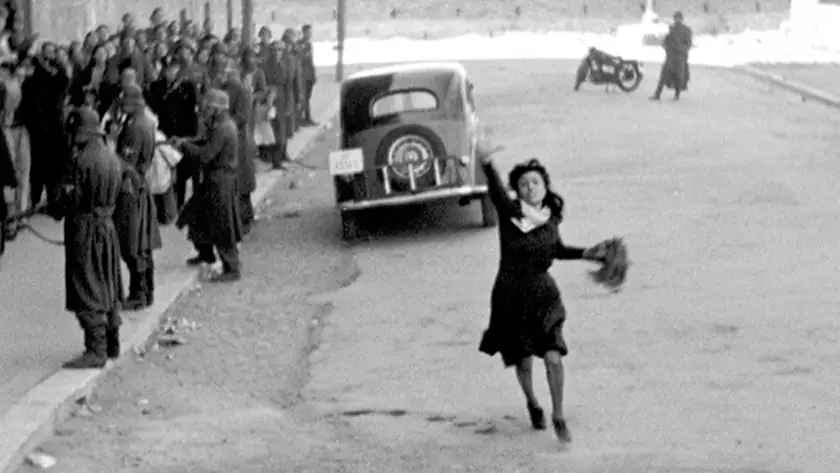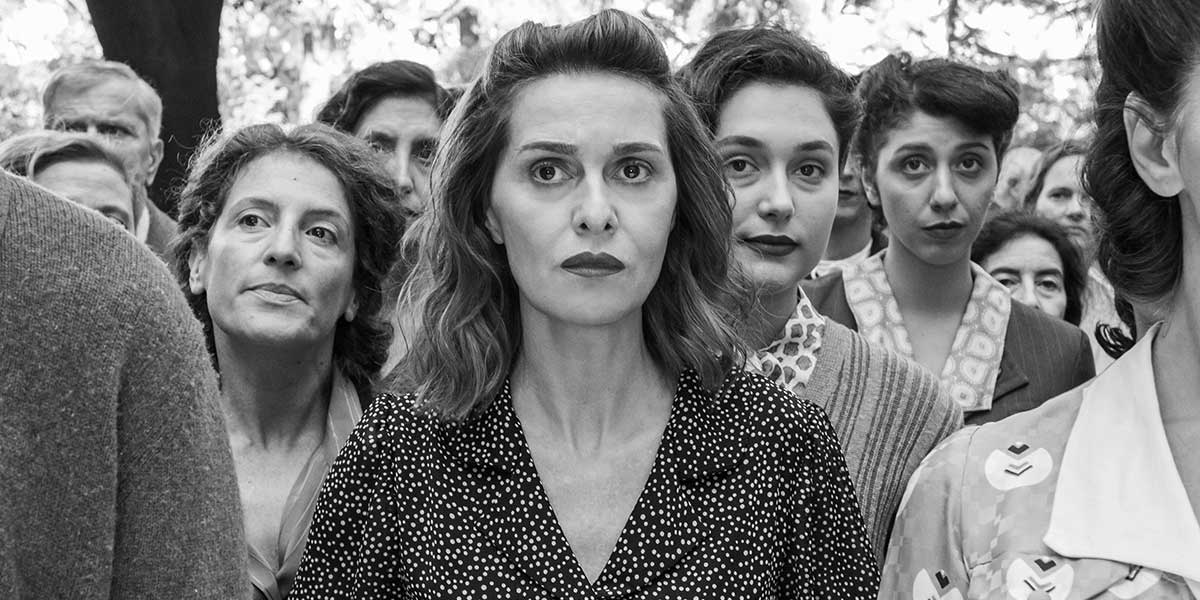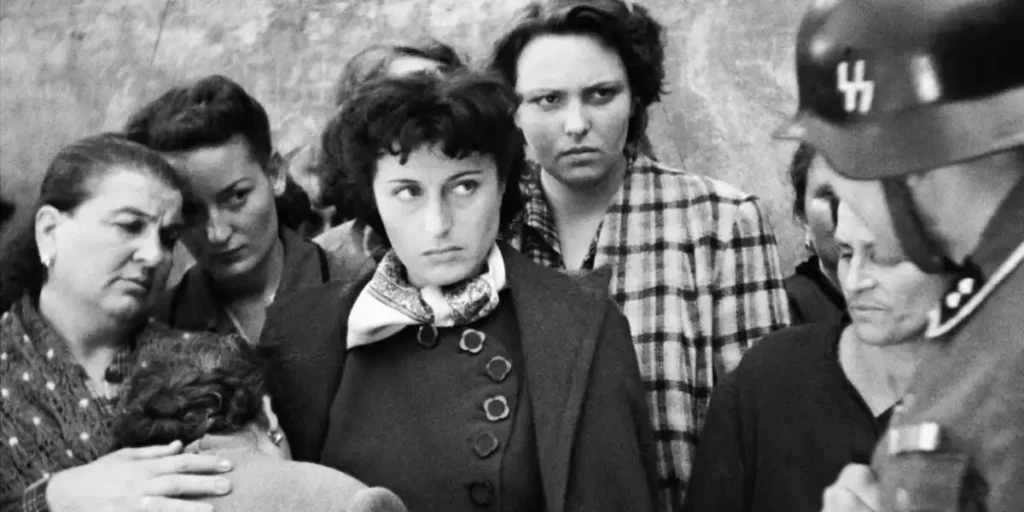Capturing the essence of Italian Neorealism, Roberto Rossellini’s Rome, Open City is one of those films that will never get old.
Director: Roberto Rossellini
Genre: Thriller, War Drama
Run Time: 103′
US Release: February 25, 1946
UK Release: July 18, 1947
Where to watch: on digital & VOD
Rome, Open City (Roma Città Aperta) was one of the first films I saw for my Italian Neorealism class at university and one of the first movies I ever saw as part of my degree. Needless to say, I immediately fell in love with it. Since then, I have gone back to Roberto Rossellini’s film multiple times: each one allowed me to notice a new detail in the complex and rich storytelling and visuals of the movie.
But the best re-watch of the film was this year, with a masterful restoration of such an iconic and important movie: what a privilege it is to see its restored version now, 5 years later. This new restoration also coincides with the upcoming 80th anniversary of the movie and is part of the Italian Neorealism season at the BFI in May and June.
The film starts in occupied Rome in 1944 with the German troops’ attempt to arrest Giorgio Manfredi (Marcello Pagliero), one of the leaders of the Resistance movement against the Nazis and Italian Fascists. As Rome, Open City goes on, Manfredi repeatedly tries to flee the city and escape the Germans with the help of Don Pietro Pellegrini (Aldo Fabrizi), a Catholic priest who is helping the Resistance, Francesco (Vito Annicchiarico), another Resistance fighter, Pina (Anna Magnani), Francesco’s pregnant fiancée, and her son Marcello (Vito Annicchiarico) who is part of a group of young boys fighting their own resistance. The film follows these various characters who unite against the Nazi occupation despite all their differences.
Released in 1945, Rome, Open City may not be the first Neorealist film, but it is the movie that made Italian Neorealism known globally. At the time, Italian Neorealism represented a cultural and social shift in Italy, and this is very much reflected in the movie. Many of the key characteristics that we now identify with the national film movement are visible in the movie today and make it the masterpiece that it is. Aesthetically, its on-location shooting, use of long shots, and use of non-professional actors for the minor characters all add to the documentary-like aesthetics of the film. Thematically, the focus on ordinary working-class people and their everyday life conditions of poverty, oppression, and injustice allows it to stay true to the historical reality of the time.

Looking at it now, Rome, Open City paints a heartbreakingly accurate picture of what life looked like in 1944 under the Nazi occupation for the ordinary people, but at the time, Rossellini was merely filming what was happening around him. The movie can be seen as a reflection on the political situation of WWII Italy – with multiple opposing forces, namely the communist and religious parties – uniting to fight the Nazi occupation and make sure it would never happen again in postwar Italy, but I think that the film’s primary aim has always been to show the reality of its time first and foremost.
Religion also plays an important part in Rome, Open City. This is not only because Don Pietro is one of the protagonists, but also because the characters often engage in discussions regarding religion and faith during a war. Visually, Catholicism is also constantly present in the film through the symbols of religion and the dome of St Peter in the Rome skyline. There is also a Christ-like image in the beaten-up Manfredi at the end of the movie, as he reminds us of the crucifixion of Christ both visually and thematically. Manfredi is ready to die for what he believes in, and for a better future that we get a glimpse of at the end of the film.
If we look at a religious interpretation of Rome, Open City, Manfredi too died, and sacrificed himself, for the sins of humanity that, in his case, was plagued by racial stereotypes and fascist ideas. Even Don Pietro’s final words – “God, forgive them…” – heavily suggest this and underline the priest’s very own sacrifice. But the heartbreaking images of the protagonist’s unjust deaths go beyond this as it speaks to the larger context of the time where many innocent people were killed and tortured in the same way just for standing up against the totalitarian government they gave their lives to fight against.
I have often heard people say Rossellini’s film has a fairly optimistic ending, compared to many other movies of the same time and genre. And yet, as the final credits roll on at the end, I always find myself in tears. The ending of Rome, Open City is not a happy one – the movie would not have been true to its historical context nor the principles of Italian Neorealism if it had, after all – but it is a hopeful one.
At the end of the movie, the city feels quieter and emptier after the loss of two heroes of the Resistance, but Rossellini ends the film with a shot of the young boys walking together as the dome of St Peter’s Basilica stands out in the background. It is the hope for a better future for these children that drives the movie forward. In the end, all the suffering and horrors we have seen so far in Rome, Open City has been for this youth so heavily involved in the political fight at the time but who will hopefully inherit a better Rome to live in, despite – or maybe even thanks to – the ghosts of its past.
Rossellini’s Rome, Open City is not only one of the most famous and well-known movies that came out of Italian Neorealism, if not the most famous one internationally, but it is also a timeless classic. Despite being so heavily rooted in the historical context of the time, Rossellini’s message of unity against injustice, wish for peace and hope for the future remains incredibly relevant and timely even today as the spectre of Fascist seems alive and well both in Italy and abroad and countless wars and suffering are far from being over across the world.
Rome, Open City will return to UK cinemas on 17 May 2024, to celebrate its 80th anniversary. The film is is now available to watch globally on digital and on demand.
“Chasing The Real: Italian Neorealism,” presented in partnership with Cinecittà and featuring 20 titles, will run throughout May and June at the BFI.

 loudandclearreviews.com
loudandclearreviews.comLoud and Clear Reviews has an affiliate partnership with Apple, so we receive a share of the revenue from your purchase or streaming of the films when you click on the button on this page. This won’t affect how much you pay for them and helps us keep the site free for everyone.

